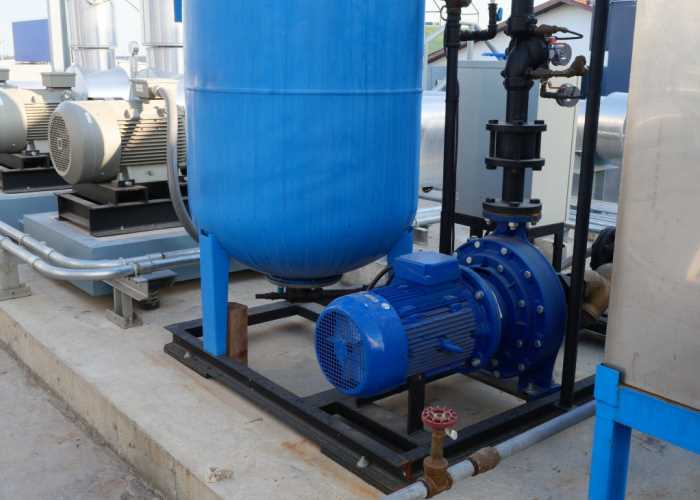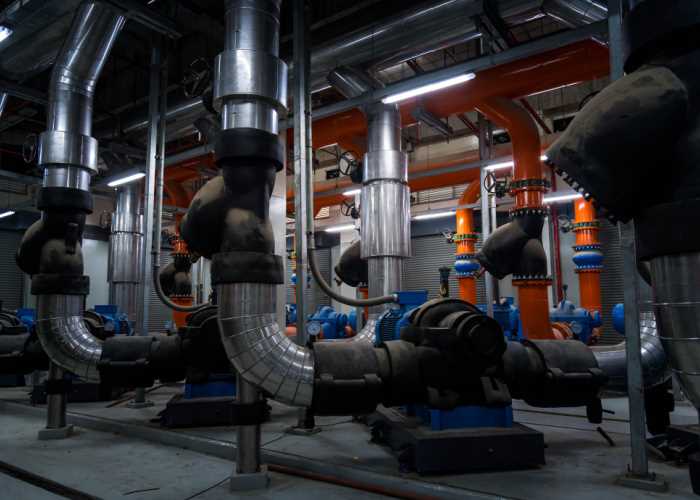Process cooling system design is a vital aspect of many industrial operations, ensuring the efficient and reliable removal of excess heat from various processes.
From large-scale manufacturing facilities to data centres and beyond, the proper design of a cooling system is instrumental in maintaining optimal operating conditions, and safeguarding equipment and products.
While the intricacies of process cooling system design require professional expertise, it’s valuable to have a basic understanding of what’s involved, as some working knowledge allows for effective communication and informed decision-making throughout the design process.
Here’s our quick guide to the basic principles and why they matter.
Heat load calculations are the foundation of designing a process cooling system, since they determine the amount of heat that needs to be removed from the process to maintain the desired temperature.
Accurate heat load calculations are essential for properly sizing the cooling equipment and ensuring the system can meet the cooling demands. Several factors influence the heat load, including the process requirements, ambient conditions, and equipment specifications.
To calculate the heat load, it’s important to consider the specific heat capacity of the material being cooled, the mass flow rate, and the temperature difference between the inlet and outlet of the cooling medium.
Specialised software and tools are available to aid in accurate heat load calculations, but it’s highly recommended to seek the expertise of a professional team.

Various types of equipment are available, such as water chillers, free coolers, adiabatic coolers and cooling towers - each with its own advantages and considerations.
When selecting equipment, you’ll need to consider factors such as the cooling requirements of the process, available space, energy efficiency, and environmental impact.
Chillers are commonly used for process cooling and offer precise temperature control, while cooling towers are suitable for large-scale applications and can efficiently dissipate heat through evaporation. Heat exchangers provide indirect cooling by transferring heat from the process fluid to a cooling medium.
When designing the piping system, factors such as fluid properties, flow rates, and pressure requirements must be considered.
Proper pipe sizing helps maintain adequate flow velocity and minimises pressure losses, and the choice of pipe materials should take into account factors such as corrosion resistance, thermal conductivity, and cost-effectiveness.
In addition to selecting suitable pipe materials and sizes, the layout and routing of the pipes should be carefully planned to minimise the distance and number of bends, which can cause flow restrictions and pressure drops.
Correct insulation helps maintain the desired temperature levels, reduces energy waste, and enhances the overall performance of the process cooling system.
The choice of insulation material depends on factors such as the operating temperature range, moisture resistance, and fire safety requirements. Common insulation materials used in process cooling systems include foam insulation, mineral wool, and fibreglass.
The insulation thickness should be determined based on factors such as the temperature difference between the process fluid and the surroundings, the ambient conditions, and the desired energy efficiency.
Proper installation of insulation is also vital. It should be applied without any gaps or voids, and special care should be taken to insulate valves, flanges, and other components that may create thermal bridges.

Process cooling systems often need to be integrated with other systems - such as HVAC and refrigeration - and it’s important to consider factors such as compatibility, interdependencies, and control strategies here.
Coordinated control allows for efficient operation and ensures that cooling demands are met while considering the energy requirements of other systems. Monitoring techniques, such as centralised control systems and data logging, provide insights into system performance, facilitate troubleshooting, and enable proactive maintenance.
By considering the integration requirements and ensuring compatibility between different systems, you can achieve enhanced overall performance and operational efficiency for your process cooling system.
By implementing these best practices and seeking professional guidance when needed, you can design a process cooling system that maximises operational efficiency, reduces energy consumption, and delivers cost-effective cooling for your industrial processes.
Remember that each process cooling system is unique, so it is important to tailor the design to meet the specific requirements of your application.
At Loughborough Air Conditioning, we have years of experience supplying and maintaining process cooling systems. From pharmaceutical to manufacturing applications, we have the skills and knowledge to provide precision control, ensuring optimum operating temperatures for equipment, and a safe working environment for employees.
When it comes to maintenance, we take the time to understand your cooling process and plant so we can competently diagnose and repair issues at speed. This ensures minimal downtime for your system, with minimal impact to your business.
If you’re looking for process cooling services in Loughborough and the surrounding areas, we’d be more than happy to discuss your specific requirements.
